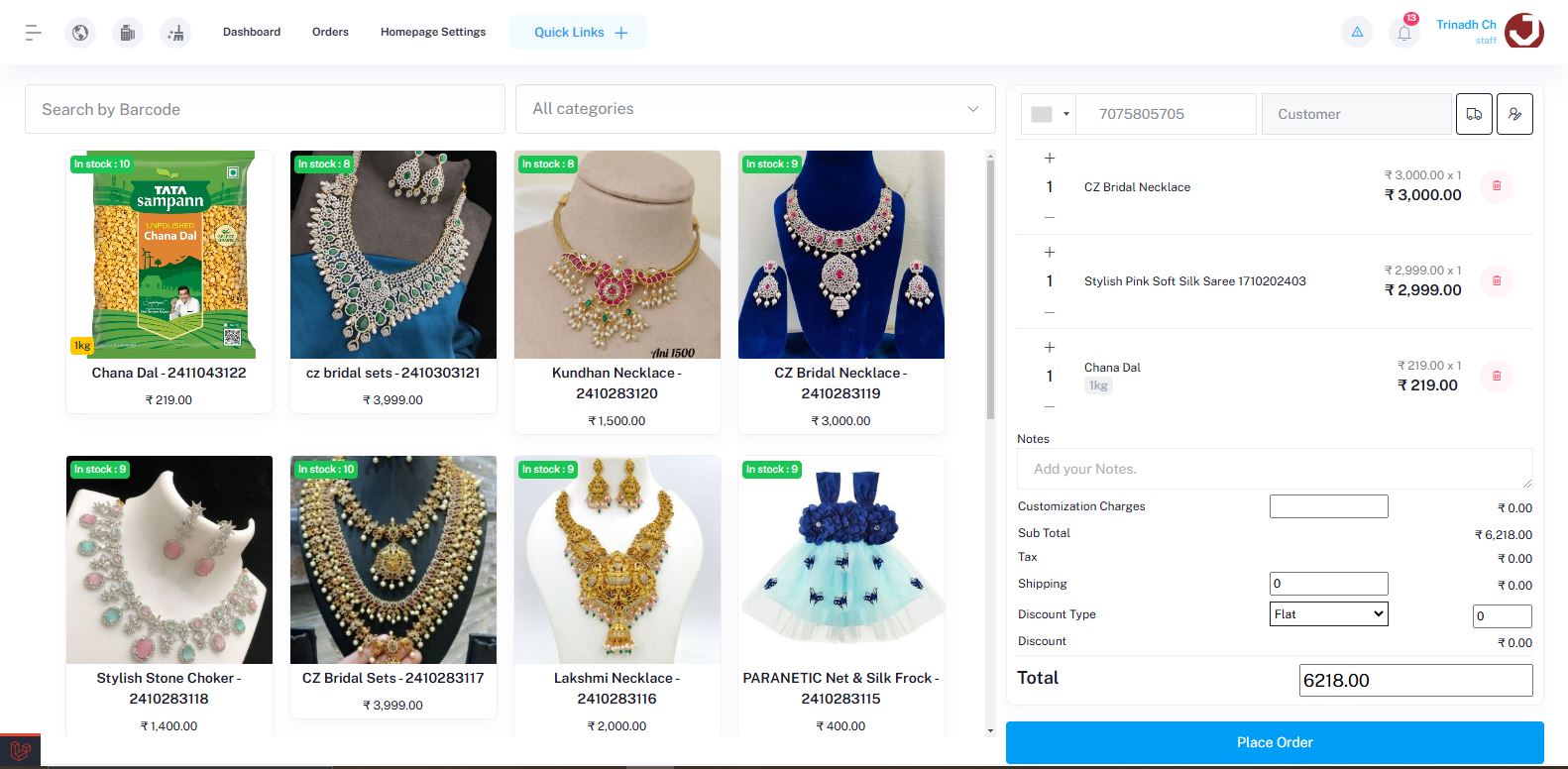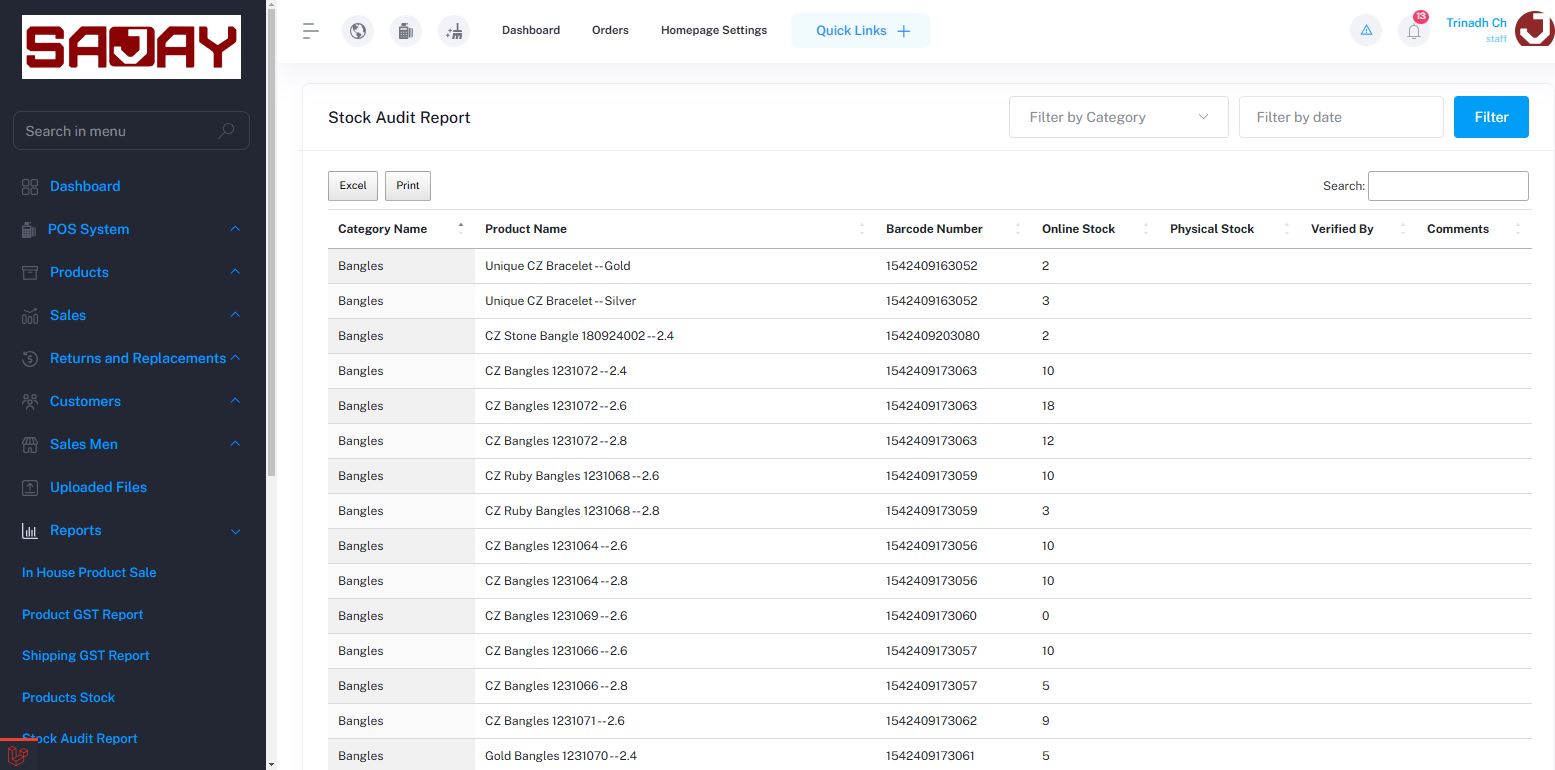Best Services Grow Your
Business Value
Globally actualize cost effective with resource maximizing leadership skills.
Inventory Management System
Synergistically pursue accurate initiatives without economically imperatives.
Included with...
- Stock Tracking
- Order Management
- Inventory Valuation
- Supplier Management
- Stock Replenishment
- Inventory Audits
- Warehouse Management
- Inventory Control
- Returns Management
- Reporting and Analytics
- Integration with Other Systems
- Multi-location Support
- User Roles and Permissions
- Mobile Access
Inventory Management System Details
Certainly! Here’s a detailed elaboration of each feature of an inventory management system:
Stock Tracking
- Real-Time Inventory Updates: Monitor and update stock levels in real-time as products are received, sold, or adjusted.
- Barcode/RFID Scanning: Use barcode or RFID technology to track products and update inventory records quickly and accurately.
- Stock Movement Logs: Maintain logs of stock movements, including incoming shipments, sales, returns, and internal transfers.
Order Management
- Order Processing: Automate the process of creating, managing, and tracking purchase orders (POs) and sales orders (SOs).
- Order Fulfillment: Track the status of orders from initiation to fulfillment, including picking, packing, and shipping.
- Backorder Management: Manage and track backorders, including notifying customers of delays and expected fulfillment dates.
Inventory Valuation
- Cost Tracking: Calculate and track the cost of inventory items using methods like First-In-First-Out (FIFO), Last-In-First-Out (LIFO), or Weighted Average Cost.
- Valuation Reports: Generate reports on the total value of inventory, including cost of goods sold (COGS) and inventory valuation at different points in time.
- Profit Margin Analysis: Assess profit margins by comparing inventory costs to sales prices.
Supplier Management
- Supplier Information: Maintain a database of suppliers, including contact details, pricing agreements, and performance metrics.
- Purchase Order Management: Create and manage purchase orders, track supplier shipments, and handle supplier invoices.
- Supplier Performance Tracking: Monitor supplier performance based on metrics such as delivery timeliness, quality, and pricing.
Stock Replenishment
- Reorder Alerts: Set thresholds for minimum stock levels and receive automatic alerts when inventory falls below these levels.
- Automated Reordering: Automate the reordering process by generating purchase orders based on stock levels, historical data, and demand forecasts.
- Demand Forecasting: Use historical sales data and predictive analytics to forecast future inventory needs and adjust reorder points accordingly.
Inventory Audits
- Cycle Counting: Conduct periodic cycle counts to verify inventory accuracy and reconcile discrepancies without halting operations.
- Physical Inventory Counts: Perform comprehensive physical counts of inventory at regular intervals or during specific periods.
- Audit Trails: Maintain detailed records of all inventory adjustments, including reasons for changes and who made them.
Warehouse Management
- Location Tracking: Manage inventory locations within the warehouse, including bin or shelf numbers, to optimize storage and retrieval.
- Picking and Packing: Use picking lists and packing instructions to streamline the order fulfillment process and ensure accuracy.
- Space Utilization: Optimize warehouse space by implementing efficient storage solutions and managing inventory layout.
Inventory Control
- Stock Levels Management: Monitor and control inventory levels to prevent overstocking or stockouts.
- Stock Adjustment: Adjust inventory levels to account for discrepancies, damaged goods, or other factors affecting stock accuracy.
- Alerts and Notifications:Set up alerts for stock level changes, discrepancies, or other inventory-related issues.
Returns Management
- Return Processing: Manage the return process for products, including initiating returns, updating inventory, and issuing refunds or exchanges.
- Return Authorization: Implement return authorization procedures to ensure that returns are valid and processed according to company policies.
- Reverse Logistics: Handle the logistics of returning products to inventory, including inspection, restocking, and updating records.
Reporting and Analytics
- Inventory Reports: Generate various reports on inventory levels, stock movements, and order statuses to gain insights into inventory performance.
- Sales Analysis: Analyze sales data to understand demand patterns, identify top-selling products, and adjust inventory strategies.
- Performance Metrics: Track key performance indicators (KPIs) such as turnover rates, stock-out rates, and order accuracy.
Integration with Other Systems
- ERP Integration:Integrate with Enterprise Resource Planning (ERP) systems for seamless data flow between inventory management and other business functions.
- E-commerce Integration: Connect with e-commerce platforms to synchronize online orders, stock levels, and product information.
- Accounting Integration: Integrate with accounting systems to ensure accurate financial reporting and manage inventory-related expenses.
Multi-location Support
- Location Management:Manage inventory across multiple warehouses or store locations, including stock transfers and location-specific reporting.
- Centralized Control: Centralize inventory management for improved visibility and control across all locations.
- Location-specific Reporting: Generate reports specific to each location, including stock levels, sales performance, and inventory turnover.
User Roles and Permissions
- Role-Based Access:Define user roles and permissions to control access to inventory management features and data based on job responsibilities.
- Audit Logs: Maintain logs of user activities and changes to inventory records for security and compliance purposes.
- Access Controls: Implement access controls to ensure that only authorized personnel can perform sensitive inventory management tasks.
Mobile Access
- Mobile Interface:Provide a mobile-friendly interface or app for accessing inventory management features from smartphones and tablets.
- Real-Time Updates: Allow users to perform inventory tasks such as stock checks, order processing, and stock adjustments on the go.
- Mobile Scanning: Use mobile devices to scan barcodes or RFID tags for inventory management tasks.
These features collectively enable effective inventory management, ensuring accurate stock levels, efficient order processing, and comprehensive visibility into inventory performance.
Know More Details
Best Services Grow Your
Business Value
Globally actualize cost effective with resource maximizing leadership skills.
Automated Reports
Synergistically pursue accurate initiatives without economically imperatives.
Included with...
- High-converting
- Personal branding
- Modernized prospecting
- Clean and modern
- Showcasing success
- Bootstrap latest version
Automated Reports
Synergistically pursue accurate initiatives without economically imperatives.
View DetailsCompare A/B Testing
Credibly disintermediate functional processes for team driven action.
View DetailsLet's Try! Get Free Support
Start Your 14-Day Free Trial
We can help you to create your dream website for better business revenue.
- Free 14-day trial
- No credit card required
- Support 24/7
- Cancel anytime







